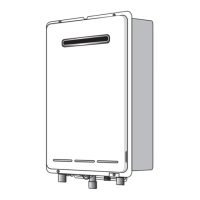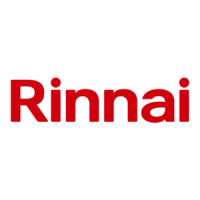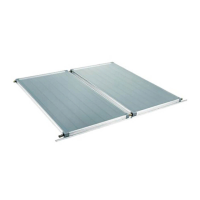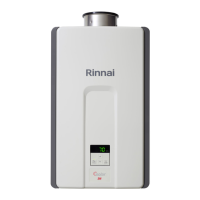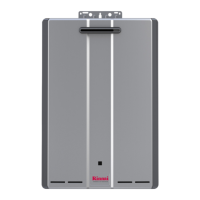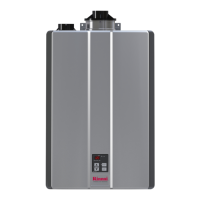Rinnai Australia - 21 - Solar Split Systems Operating / Installation Manual - Version 9 - 21/11/12
REGULATIONS AND OCCUPTATIONAL HEALTH AND SAFETY (OH&S)
Installation and commissioning must be performed by authorised persons. Rinnai solar systems must
be installed in accordance with these Instructions and all regulatory requirements which exist in your
area including those in relation to manual lifting, working at heights and on roofs. Applicable
publications and regulations may include:
• AS/NZS 5601 Gas Installations
• AS/NZS 3500 National Plumbing and Drainage
• AS/NZS 3000 Wiring rules
• Building Codes of Australia
• Local Occupational Health and Safety (OH&S) regulations
SYSTEM ORIENTATION AND INCLINATION
The performance of any solar hot water system is determined by the way that the system is installed.
In Australia, the solar collectors ideally should face the equator (North) as shown below. Where this
orientation is not practical, collectors facing within 45 degrees from North (between North-East and
North-West) are acceptable and will only reduce efficiency by approximately 5%.
Figure 13 -
Orientation angle of Collectors
The inclination of the solar collectors should ideally be the same as the latitude angle of the site.
Inclinations within 20 degrees of the latitude angle of the site will only reduce efficiency by
approximately 5%. Most roofs within Australia have a slope of between 20° and 25° and provide an
appropriately angled mounting surface.
Installers must ensure they comply with relevant regulations in regards to inclination and orientation.
In some instances adding extra collectors may allow more flexibility in orientation.
Figure 14 -
Inclination of Collector
• Solar collectors are heavy and bulky items and are usually positioned on the
roofs of buildings. Each Australian State and Territory has a principal
Occupational Health and Safety (OH&S) Act which contains requirements relating
to the handling of large, bulky or awkward items and the prevention of falls from
elevated surfaces. Persons installing solar collectors must be aware of their
responsibilities and be adequately trained and qualified, in accordance with local
OH&S requirements.
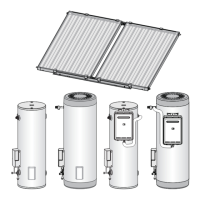
